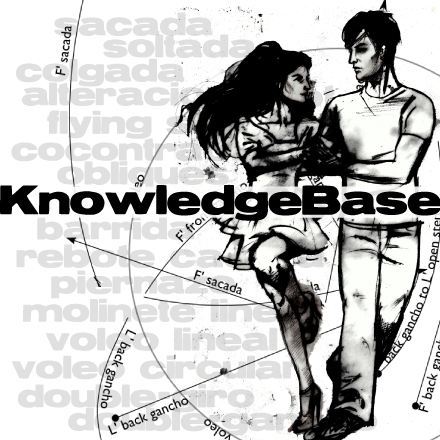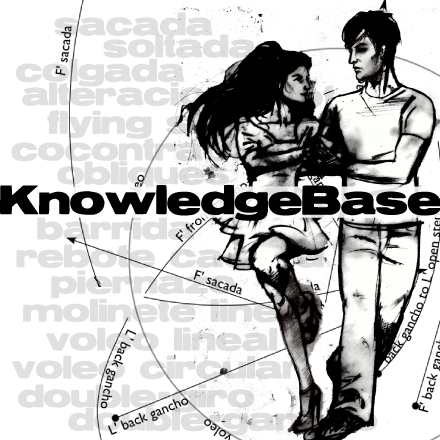Internal rotation (medial rotation) is rotation toward the center of the body.
External rotation (lateral rotation) is rotation away from the center of the body.
Base leg
To be strong and stable, the base leg should always be in external rotation.
When we are standing with weight on two feet, we have two base legs.
External rotation increases stability by ensuring that our joints and weight are supported by active muscles. If you have a hard time creating or maintaining external rotation, you need to strengthen the internal muscles of the gluts, specifically the piriformis.
Ballerinas externally rotate a lot, nearly 90 degrees, as part of the aesthetic of ballet. For functional purposes in tango, we only need to make sure that we have some external rotation. At the start of every step, we align the base leg so that it has external rotation relative to the next projection. Both mark and revel must be sure to re-align and externally rotate their base legs as part of the preparation for the next step, and place the new foot in external rotation before it receives weight.

Marks need to take special care to maintain external rotation when they have torsion in the body. External rotation will keep the muscles of both legs available and keep your back foot in working contact with the ground.

During voleo and gancho, the Revel must be sure her base leg maintains external rotation and the Mark must allow her to move to the correct position, especially in back gancho and piernazo.
Free leg
In projection, the free leg is in external rotation. Note that in side projection, the external rotation of the free leg is slight.
The process of moving the free leg to the projection is highly stylized in tango. This style aims to combine the elegance of a ballerina’s leg with the casual flirtation of a sexy, confident walk. The walking part is important. While a ballerina never relaxes her legs out of external rotation, the tango walk involves a relaxed free leg. To do this the free leg’s hip relaxes into internal rotation as it pass close the base leg and return to external rotation as the free leg extends toward the next projection. The fully projected foot is in external rotation, ready to become the new base leg.
Arms
The arms are always in external rotation, maintained by gentle contraction of the infraspinatus and teres minor, muscles of the rotator cuff. This muscle action connects the hands to the spine.











